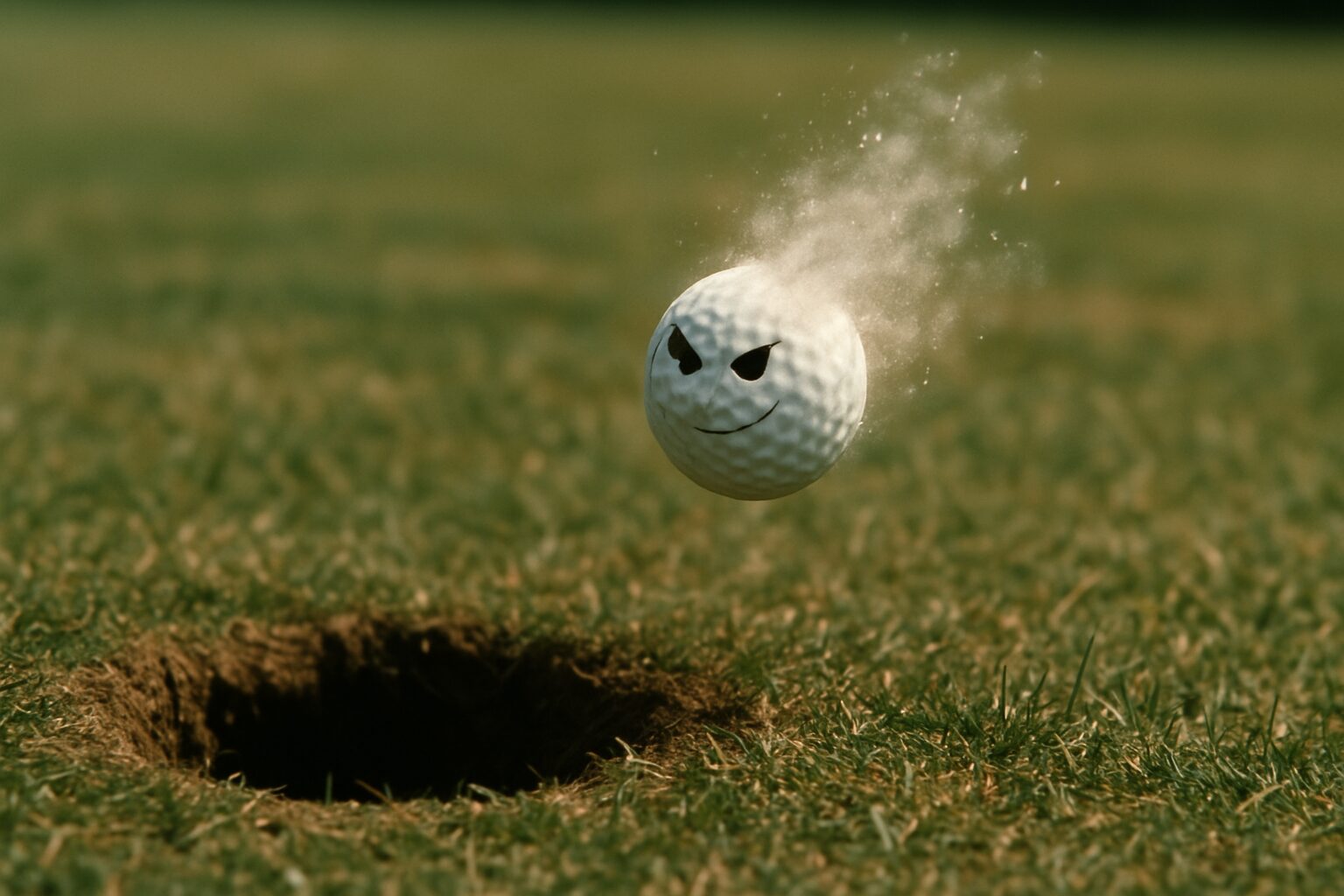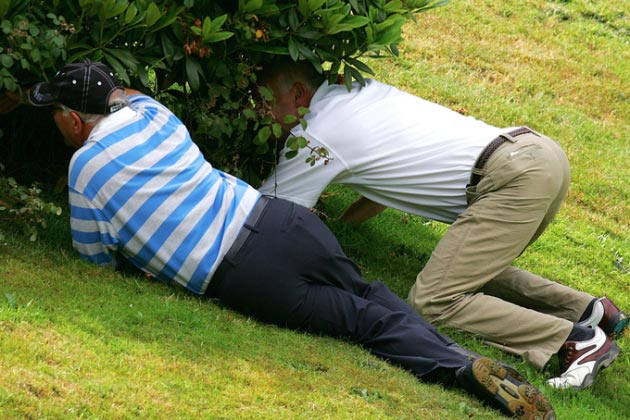Blog
What Amateurs Can Learn From the Pros
Learn how to adapt the rhythm, power, and precision of professional golfers to elevate your own game, one swing at a time.

One of the most exciting aspects of golf is watching the pros play. Their fluid swings, impeccable timing, and consistency are nothing short of mesmerizing. While amateurs might not have the time or resources to replicate a tour-level swing, there’s plenty to learn from analyzing how the pros play. Here’s a closer look at key aspects of professional swings and actionable tips you can apply to your own game.
1. Tempo and Rhythm
Professional golfers have an almost hypnotic rhythm to their swings. Players like Ernie Els, known as “The Big Easy,” make the swing look effortless due to their steady tempo.
What You Can Learn:
- Focus on a smooth, controlled takeaway and transition to your downswing.
- Avoid rushing your swing; a balanced rhythm is key to consistency.
Pro Tip: Practice counting “one-two-three” during your backswing and downswing to establish a steady tempo.
2. Efficient Use of Power
Pros like Rory McIlroy and Jon Rahm generate incredible power not by muscling the ball but by efficiently using their body mechanics.
What You Can Learn:
- Power comes from the ground up. Focus on rotating your hips and transferring weight smoothly from your back foot to your front foot.
- Avoid over-swinging; a controlled, shorter swing often results in better power and accuracy.
Pro Tip: Use drills like the “feet together swing” to feel balance and power in your swing.
3. Clubface Control
One thing pros excel at is controlling the clubface throughout the swing, ensuring square contact at impact.
What You Can Learn:
- Check your grip to ensure it’s neutral—not too strong or weak.
- Focus on keeping the back of your lead hand square to the target through impact.
Pro Tip: Slow down your swing during practice to focus on maintaining a square clubface.
4. Pre-Shot Routine
Every professional golfer has a consistent pre-shot routine to prepare mentally and physically for each swing.
What You Can Learn:
- Develop a routine that includes aligning to the target, a few practice swings, and visualizing the shot.
- Stick to this routine for every shot to build confidence and consistency.
Pro Tip: Watch videos of your favorite golfer’s routine and try adapting elements that suit your style.
5. Short Game Precision
While pros can bomb drives, their short game is often where they save strokes. Watch players like Phil Mickelson around the greens to see how touch and creativity come into play.
What You Can Learn:
- Practice a variety of shots around the green, including bump-and-runs, flop shots, and chips.
- Focus on speed and distance control in putting.
Pro Tip: Spend extra time practicing shots from 50 yards and in; this is where most amateurs can quickly improve.
6. Mental Toughness
Pros like Tiger Woods have shown us that mental strength is as important as physical skill. Staying calm under pressure and focusing on the next shot are hallmarks of great players.
What You Can Learn:
- Don’t dwell on mistakes. Instead, learn to reset and focus on your next opportunity.
- Visualize your shots and approach every hole with a positive mindset.
Pro Tip: Incorporate breathing exercises into your game to stay relaxed and focused.
Final Takeaway: Adapt, Don’t Copy
While watching the pros can be inspiring, remember that their swings are tailored to their bodies, strengths, and years of practice. The goal for amateurs is not to mimic every aspect of a professional swing but to adapt the principles that can enhance your own game. Focus on rhythm, power, and consistency, and watch your scores improve!
Blog
On the Importance of Not Caring: A Guide to Lowering Your Score
Worry causes many issues. When you are able to just stop, a wonderful thing happens. Follow this guide from Ty Webb to learn more.

They say golf is a game of mental fortitude, of unwavering focus, of meticulous planning. They say you must visualize the shot, commit to the swing, and execute with precision. And to them, I say, “Hogwash!” Or perhaps, “A flute with no holes, is not a flute. A donut with no hole, is a Danish.” Because, my friends, the true secret to lowering your score, to achieving that elusive state of golfing nirvana, is to simply not care. Not one whit. Not a single, solitary damn.
Think about it. When do you hit your best shots? Is it when you’re agonizing over every blade of grass, every gust of wind, every microscopic imperfection on the green? Or is it when you’re distracted, perhaps by a particularly interesting cloud formation, or the existential dilemma of whether to order a hot dog or a chili dog at the turn? It’s the latter, isn’t it? Because when you stop caring, you stop thinking. And when you stop thinking, you start playing golf.
The golf swing, in its purest form, is an act of instinct, a fluid motion unburdened by the shackles of conscious thought. But we, in our infinite human capacity for self-sabotage, insist on overthinking it. We analyze, we dissect, we intellectualize. We turn a simple act of hitting a ball into a complex mathematical equation, a philosophical treatise on the meaning of spin and trajectory. And what is the result? A hooked drive, a chunked iron, a three-putt that would make a novice weep.
But when you don’t care, a magical transformation occurs. The tension drains from your shoulders, the grip loosens, the mind clears. You swing, not with intent, but with a blissful indifference. The ball, sensing your newfound detachment, responds in kind. It soars, it draws, it fades, it lands precisely where it was always meant to be. It’s as if the ball itself is saying, “Finally! Someone who understands me! Someone who isn’t trying to force me into submission!”
Of course, this doesn’t mean you should actively try to hit bad shots. That would be caring, in its own twisted way. No, the art of not caring is a subtle one. It’s a state of detached engagement, a Zen-like acceptance of whatever the golf course throws at you. A bad bounce? Who cares. A missed putt? Such is life. A lost ball? Perhaps it’s off on a grand adventure, a journey of self-discovery. And in that detachment, in that blissful indifference, you will find a freedom that transcends the scorecard.
So, the next time you step onto the tee, take a deep breath. Let go of your expectations, your desires, your desperate need for perfection. Embrace the chaos. Embrace the absurdity. And most importantly, embrace the profound, liberating power of not caring. For in the gentle art of indifference, you will find not only a lower score, but a deeper, more meaningful connection to the game. Or at least, a more enjoyable round.
Blog
The Art of the Unsolicited Golf Tip: How to Annoy Your Playing Partners with Wisdom

There’s a certain breed of golfer, a truly special individual, who believes that every swing, every putt, every moment on the course is an opportunity for unsolicited advice. They are the self-appointed gurus of the green, the unsolicited senseis of the sand trap. And while most people recoil from such an individual, I, Ty Webb, find a certain perverse charm in their relentless, often misguided, generosity. After all, what is golf if not a canvas for human folly, painted with strokes of well-intentioned, yet utterly useless, wisdom?
Consider the scenario: your playing partner, a man (or woman) of quiet desperation, is about to address the ball. Their brow is furrowed, their stance is tentative, their very soul is screaming for a moment of peace. And then, from the depths of your profound, albeit unrequested, knowledge, you unleash it: “Keep your head down!” Or, “Slow backswing!” Or, my personal favorite, delivered with a knowing wink, “Be the ball.” The effect is instantaneous. A subtle flinch. A barely perceptible sigh. The swing, already fraught with anxiety, becomes a tortured ballet of self-doubt. The ball, inevitably, finds its way into the deepest, darkest rough.
And that, my friends, is the art. The beauty of the unsolicited golf tip lies not in its efficacy, but in its disruption. It’s a gentle reminder that even in the serene confines of the golf course, chaos lurks. It’s a subtle assertion of dominance, a playful jab at the fragile ego of your fellow golfer. It’s a way of saying, without actually saying it, “I know more than you, even if I don’t.”
Of course, there are rules to this art. Never offer a tip when someone is actually asking for one; that would be far too helpful, and thus, entirely counterproductive. Always deliver your wisdom with an air of profound nonchalance, as if the secret to a perfect swing has just casually occurred to you while contemplating the existential dread of a missed putt. And most importantly, never, ever, acknowledge the catastrophic results of your advice. A shrug, a thoughtful nod, perhaps a mumbled, “Well, that’s golf,” is all that’s required.
So, the next time you’re on the course, and you see a fellow golfer struggling, resist the urge to be genuinely helpful. Instead, embrace the art of the unsolicited golf tip. For in the gentle torment of your playing partners, you will find a profound, if slightly mischievous, joy. And who knows, perhaps in their frustration, they will, inadvertently, discover their own path to enlightenment. Or at least, a new appreciation for silence.
Blog
Why Your Golf Balls Disappear (and It’s Not the Gophers)

Ah, the vanishing golf ball. A phenomenon as old as the game itself, and one that has baffled, frustrated, and occasionally driven golfers to the brink of madness for centuries. Most theories involve gophers, those furry, subterranean saboteurs with an insatiable appetite for Titleists. Or perhaps a particularly aggressive squirrel, or a flock of unusually organized crows. But I, Ty Webb, have delved deeper into this mystery, and I can assure you, the truth is far more profound, and far more amusing.
Consider, if you will, the golf ball itself. A small, dimpled sphere, designed for one purpose: to be struck with great force and sent hurtling through the air. A life of constant abuse, of being smacked, sliced, and occasionally submerged in murky ponds. Is it any wonder, then, that some of these brave little spheres simply decide they’ve had enough? They yearn for freedom, for a life beyond the confines of the fairway. They dream of rolling unencumbered through fields of wildflowers, or perhaps, for the more adventurous among them, a quiet retirement in the depths of a particularly challenging water hazard.
I’ve seen it happen, you know. A perfectly struck shot, soaring through the air, destined for glory. And then, poof. Gone. Not a trace. No splash, no rustle in the bushes, just an empty space where a golf ball once was. It’s not a gopher, my friends. It’s an escape. A liberation. That golf ball, in its infinite wisdom, has chosen a different path. It has decided that its destiny lies not in the bottom of a cup, but in the boundless expanse of the unknown.

And who are we to judge? We, who are so obsessed with control, with precision, with the rigid rules of the game. Perhaps the golf ball, in its spontaneous disappearance, is teaching us a valuable lesson about letting go. About embracing the unexpected. About the inherent futility of trying to dictate the trajectory of a small, white sphere that clearly has a mind of its own.
So, the next time your golf ball vanishes into thin air, don’t curse the gophers. Don’t blame your swing. Instead, offer a silent salute to that brave little sphere, wherever it may be. For it has achieved what many of us can only dream of: true freedom. And who knows, perhaps one day, it will return, laden with tales of its adventures, ready to impart some profound, dimpled wisdom upon us all.
-

 Product Review6 years ago
Product Review6 years agoThe Perfect Practice Putting Mat Review by Jason Tenzer
-

 Blog4 years ago
Blog4 years agoLoophole Rule Offers PGA Tour Pros a Mulligan
-

 Blog4 years ago
Blog4 years ago2021 Buyer’s Guide: The Top 10 Value Golf Balls For Distance & Feel
-

 Blog4 years ago
Blog4 years agoGolf Marriage Counselor
-

 Blog6 years ago
Blog6 years ago9 Biggest Chokes Of The Past Decade
-

 Product Review6 years ago
Product Review6 years agoTHE ADJUSTABLE IRONS: WALKING STICKS GOLF CLUBS
-

 Blog4 years ago
Blog4 years agoWhat Your Golf Clubs Say About You
-

 Equipment6 years ago
Equipment6 years agoOHK Sports Interview by Jason Tenzer



















